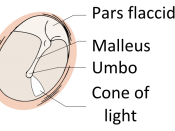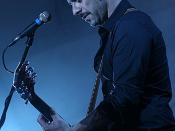How do you study? Do you use flash cards and read material? Do you just record your material and listen to it over and over again? These two techniques are used by millions of students all over the world, but one question is; which technique teaches people faster? How can you save time, but know the material you have to study?
A study at Yale University involving this matter said that seventy- three percent of people learned faster by using flash cards and/or by reading their material over and over again. Basically, they learned faster by sight, but is this scientifically true? Two activities scientists have used to analyze how people learn the fastest, are how light enters the eye and goes to the brain, and how sound enters the ear and goes to the brain.
Light enters the eye one way, but it has to be focused a different way, according to how close or far away the image is from the eye itself.
In this case, in order to focus the image and light, the type of focus used is known as lens accommodation. In this process the "lens must thicken to increase the refraction of incoming light rays." (p.570Huma) The reason this type of focus is being used is because, the material being studied is less than six meters away. After the thickening of the lens occurs, it is "under the control of parasympathetic nerves to the ciliary muscles of the ciliary body." (p.570Huma) The parasympathetic neurons then stimulate the ciliary muscles to contract. This causes the ciliary body to move forward and inward. "This results in decreasing the tension on the suspensory ligaments attached to the lens." (p.570Hurna) The light rays are increasingly refracted so the image(s) is directed to the retina. When an image is...


